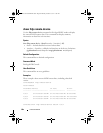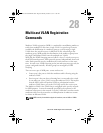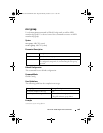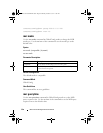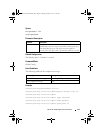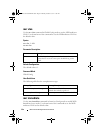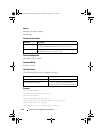
Multicast VLAN Registration Commands 607
28
Multicast VLAN Registration
Commands
Multicast VLAN registration (MVR) is a method for consolidating multicast
traffic from multiple VLANs onto a single VLAN. A typical usage scenario
would be the distribution of a multicast group to a switch using a single
VLAN where the switch has users in different VLANs subscribing to the
multicast group. MVR enables the distribution of the multicast group from
the single consolidated VLAN onto the multiple user VLANs.
MVR, like the IGMP Snooping protocol, allows a Layer 2 switch to snoop on
the IGMP control protocol. Both protocols operate independently from each
other. Both protocols may be enabled on the switch interfaces at the same
time. In such a case, MVR is listening to the join and report messages only for
groups configured statically. All other groups are managed by IGMP
snooping.
There are two types of MVR ports: source and receiver.
• Source port is the port to which the multicast traffic is flowing using the
multicast VLAN.
• Receiver port is the port where a listening host is connected to the switch.
It can utilize any (or no) VLAN, except the multicast VLAN. This implies
that the MVR switch will perform VLAN tag substitution from the
multicast VLAN Source port to the VLAN tag used by the receiver port.
The Multicast VLAN is the VLAN that is configured in the specific network
for MVR purposes. It must be manually specified by the operator for all
multicast source ports in the network. It is this VLAN that is used to transfer
multicast traffic over the network to avoid duplication of multicast streams
for clients in different VLANs.
NOTE: MVR can only be enabled on physical interfaces, not on LAGs or VLANs.
2CSPC4.XCT-SWUM2XX1.book Page 607 Monday, October 3, 2011 11:05 AM






